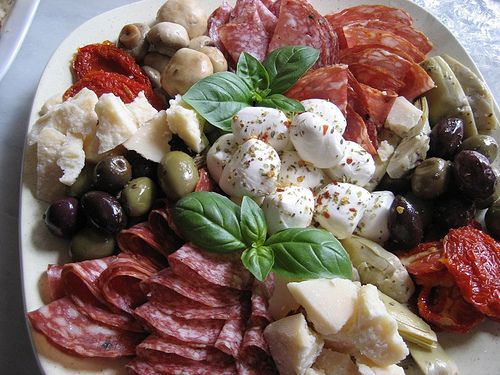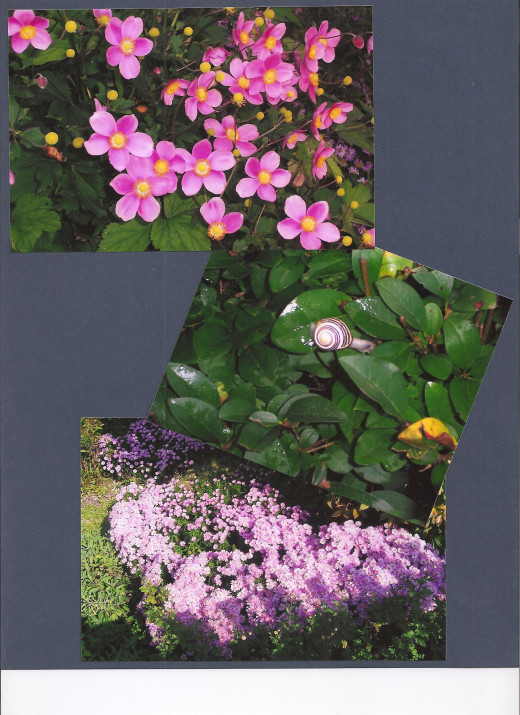Slovenia: A European Gem For Your Bucket List (Cities and Sights, Part 2)

Thank you for joining me on this journey through Slovenia. Part 1 of the story provides an overview of the 12 regions of the country.
How I Fell in Love with Slovenia
In 2006 our family vacationed in Europe. One of our stays was in Slovenia, the home of my cousin Kenneth and his wife Barbara. Our vacation began in Italy, but visiting Slovenia required just a few hours travel on the road.
When we left Maniago, Italy, the sky was overcast and the hills were shrouded in a light fog. As we headed north, the vegetation changed and the terrain became more mountainous. At noon we still had several hours of driving ahead of us; we left the highway and drove a few hundred feet down a dirt road for a brief picnic lunch. An old Austrian farmhouse and adjacent creek were the backdrop.
Our next stop would be Ljubljana

Ljubljana
I know it sounds cliché, but Ljubljana (say lyoob-lya-nah – the j’s are mostly silent), the capital of Slovenia, can best be described as a melting pot. Here you find the exuberance of youth in the University, and the tradition of administration and business in the city center. Ljubljana is a modern metropolis, planted firmly in the 21st century, but remnants of the Roman Empire are still visible within her boundaries.

...in the Beginning
Through the centuries, Ljubljana developed and expanded under the castle hill on the left and Ljubljanica River on the right. The oldest marks of settlement in this area are from the Bronze Age. On these prehistoric foundations the Roman town Emona was built. In the 6th century Slavs settled here, but many other nations affected the development of this town and the Slovene nation.
In Ljubljana, cultural activity has become a way of life. This lovely city boasts one of the world's oldest philharmonics and each year hosts more than 10,000 cultural events.
Most of the attractions of Slovenia are easily accessible as a day trip from Ljubljana, making the capital and ideal base for exploring the entire country. Popular destinations include the beaches on the Adriatic coast, the caves of the Karst region, and many castles.
Emona (Roman Rule in Ljubljana)
Ljubljana was established around the year zero as a Roman military base. The town had a population of about 6,000 and was surrounded by massive stone walls, the remnants of which remain today. Emona was a gateway for the Roman Empire to the Balkans and Eastern Europe. The Huns conquered and burned Emona in 452 AD.
Top 12 Things to See in Ljubljana
- Top sights of Ljubljana - Activities - Visit Ljubljana
Ljubljana is a picturesque city boasting a wealth of attractions. These are the ones that you simply cannot afford to miss.
- Central Market
- City Museum of Ljubljana
- Dragon Bridge
- Kongresni trg Square
- Ljubljana Castle
- National Gallery
- National Museum of Slovenia
- Prešernov trg Square
- Robba Fountain
- The Tivoli Park
- Town Hall
- Triple Bridge
Reunions and Goodbyes
Ljubljana Airport was our agreed-upon meeting place. A bittersweet place of warm hellos as we were greeted by cousins Kenneth and Barbara, and Kenneth's mother Anne. And a place of hugs and tears as Kenneth said goodbye to his 92-year old mother, she returning to her home in Manchester.
We were soon on the road once again, following Kenneth and Barbara, on the 31-mile journey to Bled, Slovenia.
Bled

Bled (pronounced Bleht) is located about 31 miles northwest of Ljubljana.
A settlement since the Mesolithic (Middle Stone-Age) period, the present-day location probably arose about 600 A.D. during the Slavic settlement of the Eastern Alps. After conquest by Frankish armies in 788 A.D., the area came under Bavarian influence.
Bled was first mentioned as Ueldes (Veldes) on 10 April 1004, when it was awarded by Emperor Henry II to Bishop Albuin I of Brixen. Bled Castle (the oldest castle in Slovenia) was completed on this land seven years later, but the Bishop never lived there. Because of its prominent position high atop Bled Island, Bled Castle was used as a defense system.
After the dissolution of Austria-Hungary in 1918, Bled came under the rule of the Kingdom of Yugoslavia and became a summer domicile of the ruling House of Karađorđević, a tradition that Yugoslav leader Josip Broz Tito continued when he built his residence here in 1947.
Today Bled Castle is now arranged as a museum. Display rooms next to the chapel present the ancient history of Bled from the first excavations to various stages of its historical development.

An Introduction to Bled
The weather was warm and sunny on this Autumn day. Our legs, long cramped in a tiny Euro-vehicle, were very happy to get out and walk along the lakeshore. In the distance we could hear a band playing--a very lively, exuberant band. An oompah band!


Bled is a small and beautiful tourist location. Numerous hotels, both modern and historic, line the shores of the lake, all focusing on the amazing view of the Bled Castle and Island.


What To Do In Bled
For such a small little corner of the world, Bled has an amazing list of outdoor activities--summer, winter, and water sports are available. There is something for everyone:
- Adventure Park/zip line
- Alpine and Sport Climbing
- Beach volleyball
- Caving
- Cycling
- Fishing
- Geocaching (treasure hunt with GPS device combined with hiking/jogging)
- Golf
- Hiking
- Horseback Riding
- Hydrospeed (wild water sport from New Zealand)
- Mini Golf
- Motorcycling
- Paintball
- Rafting, kayaking, and canoeing
- Rowing
- Scuba Diving
- Sky Diving
- Summer tobogganing
- Swimming and sun bathing
- Tennis and squash
- Walking
Maribor
Maribor is the second largest city in Slovenia. (However, keep in mind that Slovenia is not a large country—the population of this “large” city is about the same as Springfield, Illinois).
Nestled in the northeast corner of Slovenia, Maribor is bordered on the north by wine-producing hills and to the southwest by the Pohorje Mountains. The beautiful Drava River meanders through the area from east to west.

The Wine Region
Even from the Middle Ages Maribor has been renowned as an area for the production of wine and boasts one of the largest classic wine cellars in the Central Europe, with halls stretching three kilometers under the old town center.

The Pohorje Mountain
This beautiful, deeply forested mountain area certainly adds to the mystique and beauty of this city. The mountain, rising by the town, offers relaxation in the summer as well as in the winter months. Especially during the winter there are ski slopes easy enough for those new to the sport and challenging enough for the expert. Both day- and night-skiing excursions are available.
Stara Fuzina
Not a major city, not even a small town, but I would be remiss if I did not share with you a glimpse of the beautiful village where my cousins have made their home. The journey from Bled to Stara Fuzina is about 16 miles southwest.



On our first evening in Slovenia we dined in Bled, but on our second evening we ate with our cousins. And, in my memory, this was the best of all meals on our journey.
Barbara provided an amazing array of locally made sausages and cheeses, and home made bread. A simple meal. Some might even call it a peasant meal. But it was a meal of foods not formed on an assembly line but hand crafted with skill and care. We ate like royalty.




And Then We Returned Home
But, this is where your journey could begin. I hope you will consider Slovenia in your "bucket list". It is a beautiful country. Most residents speak English, but all are warm and friendly.
The Slovenes say "Dobrodošli [doh-broh-doh-shlee]" which means "Welcome!"
I Hope You're Not Disappointed
I know that you have come to expect food-history articles and amazing recipes from me in each and every article. But don't despair. This is just the prelude to a writing on the foods of Slovenia. I promise that you will love it!
© 2015 Linda Lum








